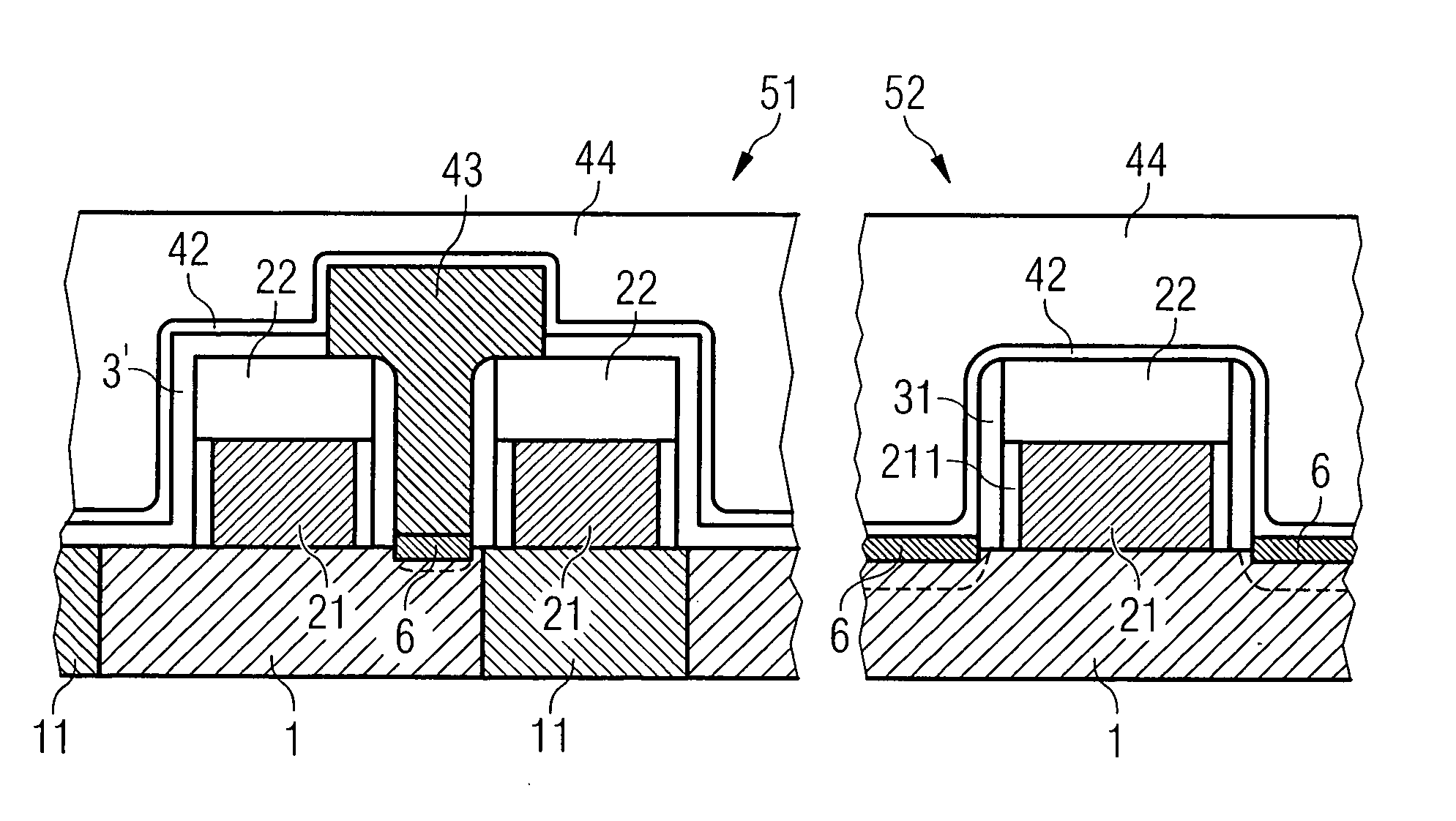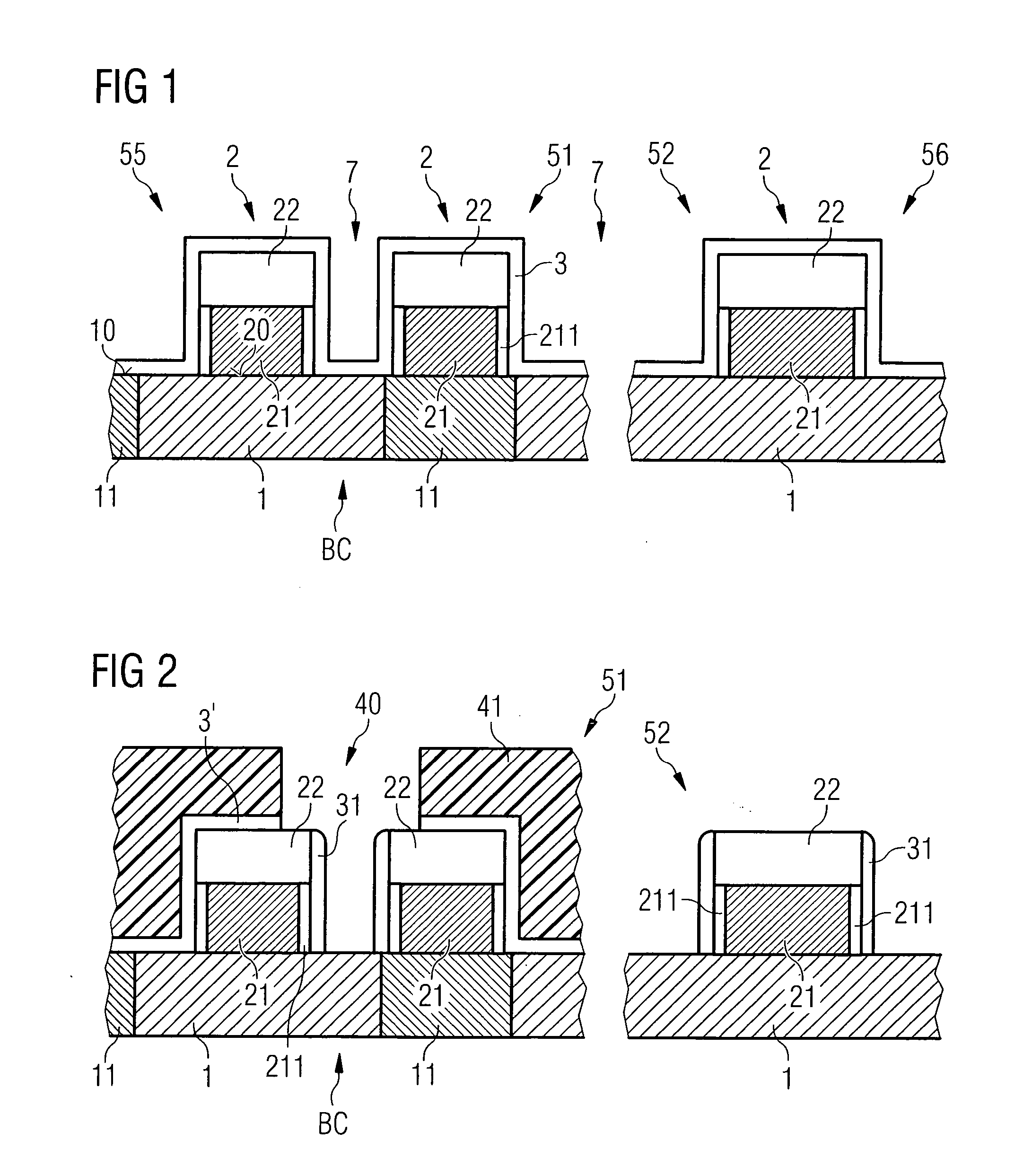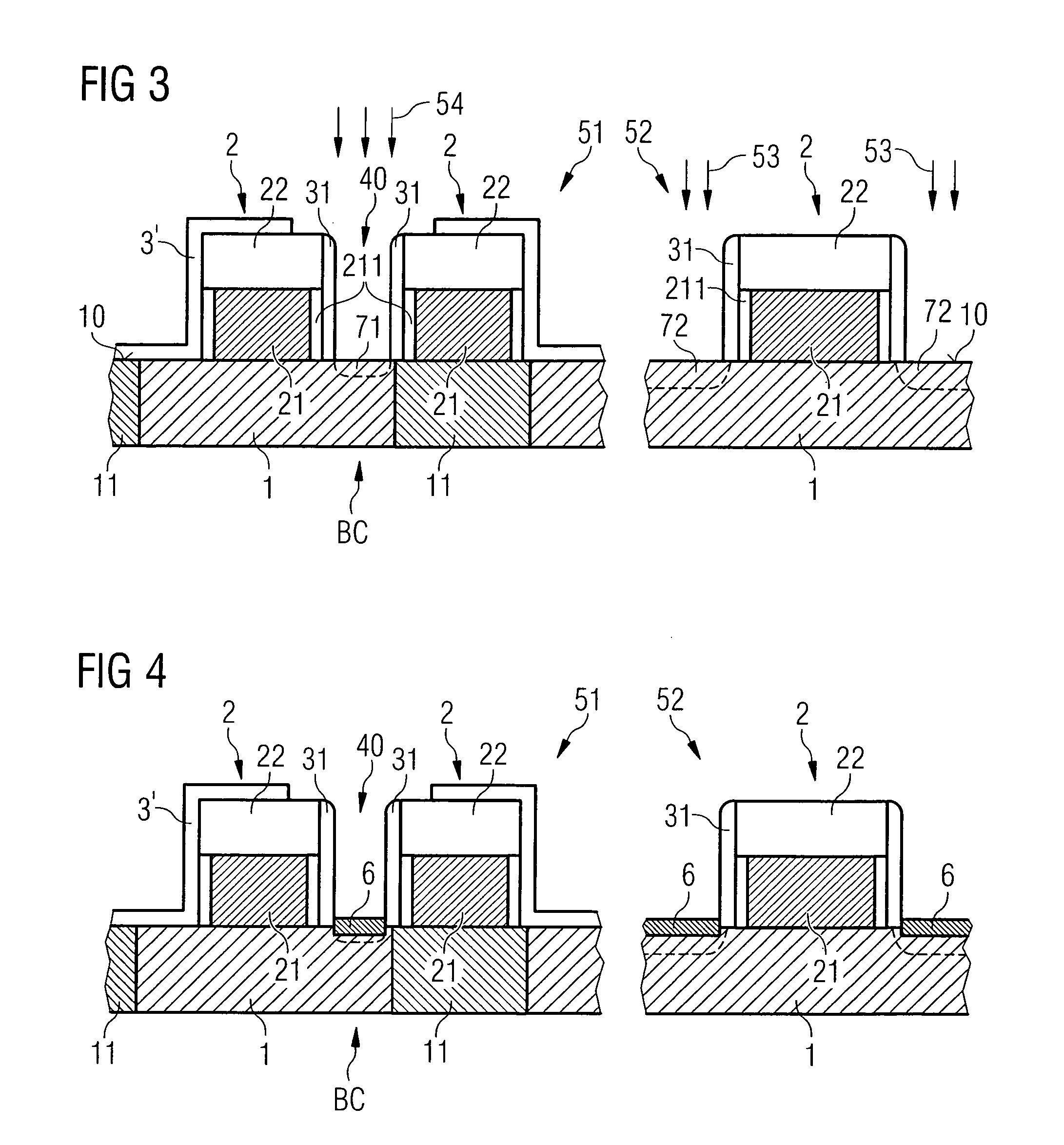Fabricating transistor structures for DRAM semiconductor components
a technology of semiconductor components and transistor structures, which is applied in the direction of semiconductor devices, electrical equipment, basic electric elements, etc., can solve the problems of reducing the contact resistance, reducing the data retention time of the dram memory cell, and adversely affecting the dopant profile of the region by heating step, so as to reduce the contact resistance of the cell array without increasing the thermal stress on the implanted structur
- Summary
- Abstract
- Description
- Claims
- Application Information
AI Technical Summary
Benefits of technology
Problems solved by technology
Method used
Image
Examples
Embodiment Construction
[0025] In accordance with the present invention, a method for fabricating transistor structures for DRAM semiconductor components includes providing gate conductor structures that are spaced apart from one another on a substrate surface of a semiconductor substrate with a cell array. First sections of the semiconductor substrate that connect to a CB contact structure and second sections of the semiconductor substrate that connect to a storage capacitor are uncovered between the gate conductor structures in the cell array. The storage capacitor can be provided as a trench capacitor or as a stack capacitor.
[0026] A spacer mask with vertical and horizontal sections is patterned over the relief on the semiconductor substrate formed from the gate conductor structures. The vertical sections cover the vertical side walls of the gate conductor structures. The horizontal sections of the spacer mask cover the second sections of the semiconductor substrate, with the first sections remaining u...
PUM
 Login to View More
Login to View More Abstract
Description
Claims
Application Information
 Login to View More
Login to View More - R&D
- Intellectual Property
- Life Sciences
- Materials
- Tech Scout
- Unparalleled Data Quality
- Higher Quality Content
- 60% Fewer Hallucinations
Browse by: Latest US Patents, China's latest patents, Technical Efficacy Thesaurus, Application Domain, Technology Topic, Popular Technical Reports.
© 2025 PatSnap. All rights reserved.Legal|Privacy policy|Modern Slavery Act Transparency Statement|Sitemap|About US| Contact US: help@patsnap.com



